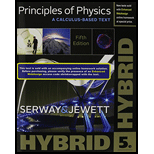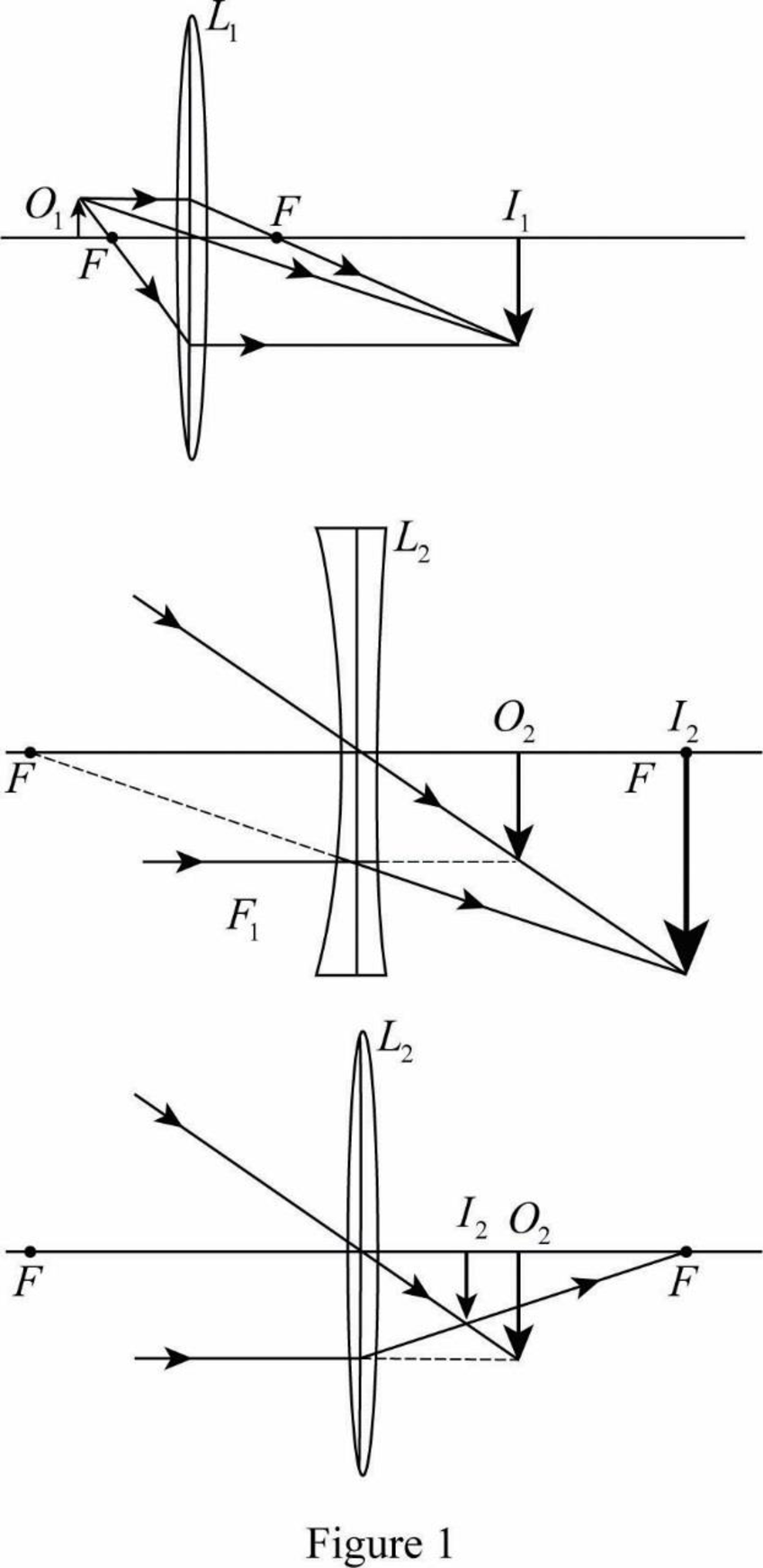
Concept explainers
(a)
Position of the image.
(a)
Answer to Problem 70P
The image distance is
Explanation of Solution
Write the mirror equation.
Here,
Rearrange (I) in terms of
The real image is the object of second lens.
Here
Write the mirror equation for lens 2.
Here
Rewrite (IV) in terms of
Conclusion:
Substitute
Substitute
Substitute
The image distance is
(b)
Magnification of the final image.
(b)
Answer to Problem 70P
Magnification is
Explanation of Solution
Write the equation for magnification for two lenses.
Write the equation for overall magnification
Conclusion:
Substitute
Substitute
Substitute
Magnification is
(c)
Whether the image is upright or inverted.
(c)
Answer to Problem 70P
The image is inverted.
Explanation of Solution
Sign of magnification decides whether the image is upright or inverted.
If magnification is positive, image is upright. If magnification is negative the image s inverted
Conclusion:
As the magnification is
(d)
Nature of the image for a given condition.
(d)
Answer to Problem 70P
The image would be inverted at a distance
Overall magnification is
Explanation of Solution
The ray diagram is as shown

Refer sub part (a) and (b) and to determine the image position and magnification
Conclusion:
Substitute
Substitute
Substitute
As the overall magnification is negative, the image is inverted.
The image would be inverted at a distance
Overall magnification is
Want to see more full solutions like this?
Chapter 26 Solutions
Principles of Physics: A Calculus-Based Text, Hybrid (with Enhanced WebAssign Printed Access Card)
- Mick and Rick are twins born on Earth in the year 2175. Rick grows up to be an Earth-bound robotics technician while Mick becomes an intergalactic astronaut. Mick leaves the Earth on his first space mission in the year 2200 and travels, according to his clock, for 10 years at a speed of 0.75c. Unfortunately, at this point in his journey, the structure of his ship undergoes mechanical breakdown and the ship explodes. How old is Rick when his brother dies?arrow_forwardHi, I have canceled, why did you charge me again?arrow_forwardNo chatgpt pls will upvotearrow_forward
 Principles of Physics: A Calculus-Based TextPhysicsISBN:9781133104261Author:Raymond A. Serway, John W. JewettPublisher:Cengage Learning
Principles of Physics: A Calculus-Based TextPhysicsISBN:9781133104261Author:Raymond A. Serway, John W. JewettPublisher:Cengage Learning Physics for Scientists and Engineers, Technology ...PhysicsISBN:9781305116399Author:Raymond A. Serway, John W. JewettPublisher:Cengage Learning
Physics for Scientists and Engineers, Technology ...PhysicsISBN:9781305116399Author:Raymond A. Serway, John W. JewettPublisher:Cengage Learning College PhysicsPhysicsISBN:9781285737027Author:Raymond A. Serway, Chris VuillePublisher:Cengage Learning
College PhysicsPhysicsISBN:9781285737027Author:Raymond A. Serway, Chris VuillePublisher:Cengage Learning Physics for Scientists and Engineers: Foundations...PhysicsISBN:9781133939146Author:Katz, Debora M.Publisher:Cengage Learning
Physics for Scientists and Engineers: Foundations...PhysicsISBN:9781133939146Author:Katz, Debora M.Publisher:Cengage Learning University Physics Volume 3PhysicsISBN:9781938168185Author:William Moebs, Jeff SannyPublisher:OpenStax
University Physics Volume 3PhysicsISBN:9781938168185Author:William Moebs, Jeff SannyPublisher:OpenStax College PhysicsPhysicsISBN:9781305952300Author:Raymond A. Serway, Chris VuillePublisher:Cengage Learning
College PhysicsPhysicsISBN:9781305952300Author:Raymond A. Serway, Chris VuillePublisher:Cengage Learning





